Perfect (Windows) 10 Part III: Microsoft's Mastermind CEO Satya Nadella & flagship phones
We have our answers. (Again). Industry watchers, analysts, investors, and enthusiasts all had their questions regarding the direction of Microsoft's mobile future, particularly about long awaited flagships, put to rest.
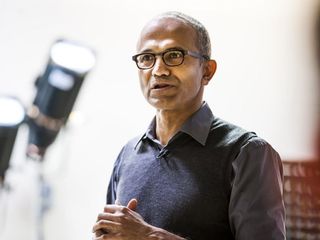
This is all thanks to communications from Satya Nadella at the end of Microsoft's 2015 fiscal year. Well, thanks to his redundancy at that time.

Instant Replay
Microsoft's CEO, Satya Nadella, by way of three memos, an interview with respected industry watcher Mary Jo Foley and an earnings call, clearly repeated the vision he presented in his July 10, 2014, memo.
Yes, the answers that have satiated the appetites of hungry Microsoft watchers this year can be found in a year-old memo.
Oh, wait. You thought the Nokia write down, the end of the low-end Lumia push, and the strategies surrounding a focused portfolio of first-party value, flagship, and business phones was new information?
Au contraire mon frere. Nadella made much of this very clear in his 7/10/14 vision-setting memo last year.
But being human, we simply forgot or missed it entirely. So when Nadella began executing against his vision this year, based on last year's pronouncements and coupled with shameless repetitions of what he said in 2014, many saw something new. Analysts saw a new strategy, investors saw a new opportunity, writers saw a new headline and enthusiasts a new hope. Nadella? He just saw his old plan coming together.
We've discussed the Nokia write-down and the low-end push and value phones. Before we address flagships let's quickly revisit the type of leader we believe Nadella to be.
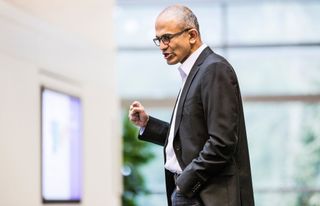
Mastermind
If you've followed this series, you realize that I've surmised that Nadella is a mastermind. Not the fictional villain that likely came to mind when you first read the word. As seen below I'm using the Myers-Briggs personality type (INTJ -Introvert, Intuitive, Thinking, Judging) as the basis for this classification.
Get the Windows Central Newsletter
All the latest news, reviews, and guides for Windows and Xbox diehards.
"INTJs (Masterminds) radiate self-confidence and an aura of mystery, and their insightful observations, original ideas, and formidable logic enable them to push change through with sheer willpower and force of personality. At times it will seem that INTJs are bent on deconstructing and rebuilding every idea and system they come into contact with. Employing a sense of perfectionism and even morality to this work – everything should be open to questioning and reevaluation. And, if they see a way, INTJs will often act unilaterally to enact their technically superior, sometimes insensitive, and almost always unorthodox methods and ideas. And every idea must pass. Is this going to work?"
As before, this sounds like Nadella to me.
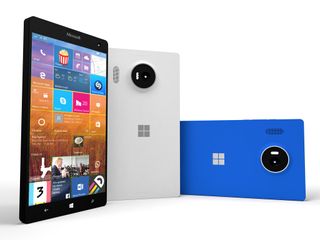
Flagships…Wherefore art thou?
As noted in part II Nadella's first year as CEO saw the execution of a mobile strategy where Microsoft pushed into all corners of the globe. Redmond drove Windows Phone volume by targeting the more affordable smartphone segments "in the near term".
Clearly, Nadella understood that the preclusion of flagship Windows Phones from the near term line up of devices during his first year would not settle well with enthusiasts. But he took a measured risk with this short term strategy, trusting that his long-term vision would accommodate the passions of Microsoft's enlisted fans.
He concluded that the rewards of investing resources into building as broad a base of Windows 10 compatible devices as possible outweighed what little benefit the platform would have gained diverting resources towards a flagship phone during FY15.
I believe that Nadella considered the following as he committed to this course.
- Diverting resources toward a flagship device during FY15 would have reduced the amount of Windows 10 Mobile compatible devices he could get into the hands of users ahead of the release of the platform.
- The market hadn't been enamored by Windows Phones. At 3% market share, they were barely noticed. A high-end device would have certainly flopped (as all other high-end Windows Phones had) against Apple and Samsung's flagship phones during Q2 of FY15 and beyond.
- The enthusiast portion of the Windows Phone market share would have been the primary demographic to purchase a flagship phone had one released. In addition to the negligible amount of devices that would have sold to those people, the hardware would not have been able to support forthcoming Windows 10 Mobile features like Windows Hello and Continuum. Hardware capable of supporting these features wouldn't be arriving until Q2 of FY16.
Thus, conceivably less than a year after enthusiasts will have invested in a new flagship, the latest and greatest Windows 10 Mobile devices would be released. These would be devices fans would love. But many who would have purchased pre-Windows 10 flagships would have found themselves stuck in a situation with an 'outdated' phone.
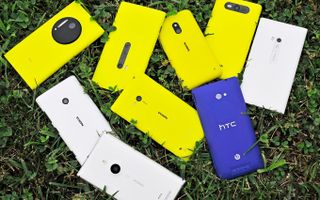
The more, the merrier, no fan left behind
Nadella wants as many enthusiasts to invest in the new Windows 10 flagships as possible. They will, after all, be the ones to champion Windows 10 phones. He couldn't risk satiating their appetites with an 'appetizer flagship' that could potentially preclude their investment in the new phones when they launched months later.
Additionally, he couldn't risk embittering enthusiasts after the new phones launch. Positive commentary would be critical from this vocal group of enlisted fans to help promote the new platform.
In my estimation, Nadella measured the cost of the current negative "no-flagship" sentiment from fans pre-Windows 10 Mobile, as less detrimental to goodwill than negative post-Windows 10 Mobile sentiment could be. If fans felt burned by investing in new pre-Windows 10 flagships when Windows 10 phones launched just months later, that sentiment could muddy the message of the new platform.

Sure the way of technology is such that your newest toy is made "obsolete" just months after purchase. But in regards to the industry-first, transformative advent of Windows 10 and Windows 10 Mobile flagships, Nadella knew that no fan would want to be left behind of this historic shift. Nor could he afford to leave anyone behind. Not because of some loyal, Marine-type, "no man left behind" sentiment. No. His strategy required it. He needs us.
To fulfill his vision, Nadella needs to bring everyone along. Consider. By way of the low-end push, the market would be saturated with Windows 10 Mobile compatible devices on the low-end.
On the flip-side, by withholding flagships until Windows 10 Mobile is ready, virtually all high-end hungry enthusiasts will be primed and ready to tote Windows 10 flagships at launch.
This strategy ensured that the optimal number of Windows 10 phones (from the low-end to the high-end) would be in the hands of the greatest number of users soon after the launch of the new platform.
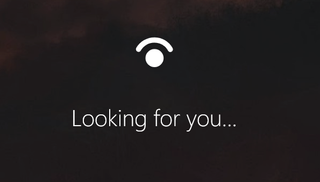
Eyes wide shut
Before we wrap up, I'd like to revisit some of the messages that have captivated the industry of late. Investors, enthusiasts, writers alike seem seduced by a belief that Microsoft has a new mobile strategy. They can't be blamed entirely. Nadella did seem to infer by way of a 7/8/15 memo, 7/14/15 interview and a 7/22/15 earnings call that there is a shift in strategy to address Microsoft's mobile woes.
Naturally, considering the state of Windows Phone over the course of Nadella's first year, the industry must have been anticipating a change of some sort. He had proclaimed a bold and ambitious vision on 7/10/14 after all. A vision that, by the estimation of some, had clearly failed.
Take particular note, below, of what Nadella offers as responses to an audience expecting a change in his strategy. Then compare that to what he said on 7/10/14. I've bulleted the quotes for easy comparison.
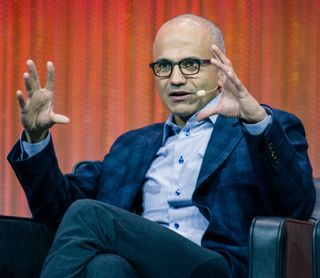
7/8/15 Nadella sent an email themed "Sharpening business focus" that followed a 6/25/15 memo titled "Aligning our strategy and structure".
"In the longer term,
- Microsoft devices will spark innovation,
- create new categories
- and generate an opportunity for the Windows ecosystem more broadly.
- Our reinvention will be centered on creating mobility of experiences across the entire device family including phones."

On a July 22, 2015, earnings call Nadella offered the following regarding high-end devices, when asked about Microsoft's phone strategy:
"You have seen some of the numbers, some of the progress we have made in Surface. I feel that we have a formula there that I would like to apply more broadly in terms of growing, just delivering innovation, growing our economic return for it,
- stimulating demand,
- creating categories,
- all of that is what I want to do broadly. It applies to phones. It applies to Surface. It applies to HoloLens, and that is how I view it."
In an interview published on 7/14/15 Mary Jo Foley asked the following:
"…now what we're doing with phone is more like what you're doing with Surface. Your phones are going to be more of like showcase devices for what Windows Mobile can look like on a phone."
To which Nadella responded,
"Correct."
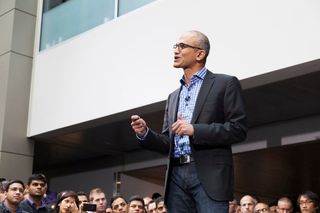
Bold Ambition
Now, within the contexts in which they were presented all of the above messages seem to communicate a new focus for Microsoft's mobile efforts. But as the title, "Aligning our strategy and structure", of the 6/25/15 memo communicates, Nadella was just bringing the firms structure in line with a strategy communicated a year earlier. A strategy that many had forgotten.
Allow me to remind you. You'll notice below that Nadella simply repeated, above, everything he shared with us one year ago on 7/10/14.
- "Our first-party devices will light up digital work and life. Surface Pro 3 is a great example – it is the world's best productivity tablet.
- In addition, we will build first-party hardware to stimulate more demand for the entire Windows ecosystem.
- That means at times we'll develop new categories like we did with Surface. It also means we will responsibly make the market for Windows Phone, which is our goal with the Nokia devices and services acquisition."
- ...we will obsess over reinventing productivity and platforms. We will relentlessly focus on and build great digital work and life experiences with specific focus on dual use.
- Our cloud OS infrastructure, device OS, and first-party hardware will all build around this core focus and enable broad ecosystems.
- ...Computing is ubiquitous and experiences span devices"...
Stimulating demand, enabling broad ecosystems, creating new categories, mobility of experiences, first-party hardware (phones) following the Surface model, etc. are all part of the vision Nadella shared last year. They are also all things Nadella recently presented to inquiring minds asking about a new mobile strategy.

Thus, because the year-old message was forgotten we've seen reports claiming an alteration of strategy and that now Microsoft will be following the Surface model with their first party hardware.
Folks, though Nadella's recent messages have gone over well with industry watchers, in truth, we've read it all before because he said it all before.
Yes, our long-awaited flagships (and value and business phones) were always destined to follow the pattern of the esteemed Surface model. Always.
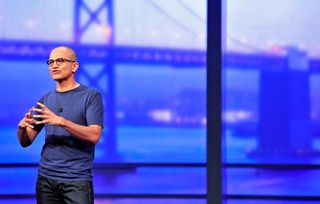
Vision
Finally, there is no alteration of course. There is rather the execution of short-term objectives of a year-old vision. I do believe that Nadella has contributed to the perception that there has been a strategic shift when he felt that that perception benefited how Microsoft is seen in the industry. And he has done this while steadily executing his long-term vision without interruption. Mastermind
Jason L Ward is a columnist at Windows Central. He provides unique big picture analysis of the complex world of Microsoft. Jason takes the small clues and gives you an insightful big picture perspective through storytelling that you won't find *anywhere* else. Seriously, this dude thinks outside the box. Follow him on Twitter at @JLTechWord. He's doing the "write" thing!

